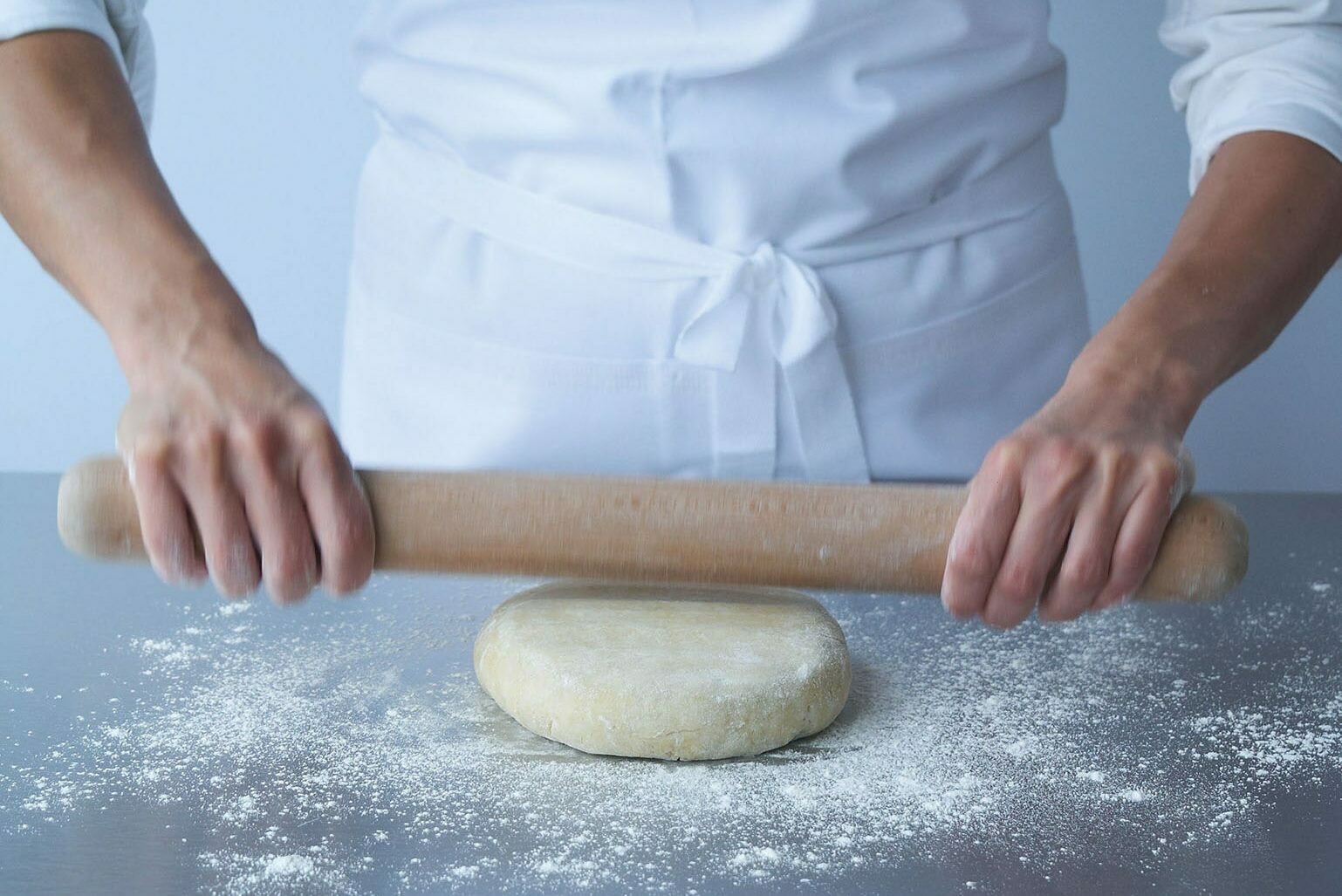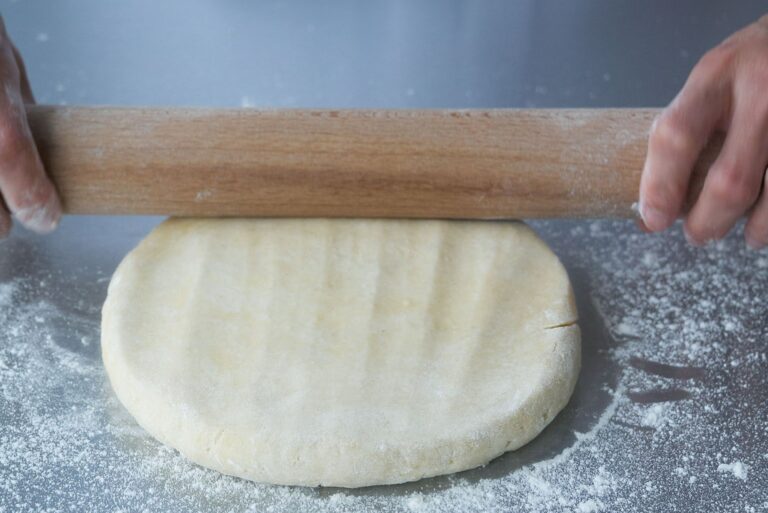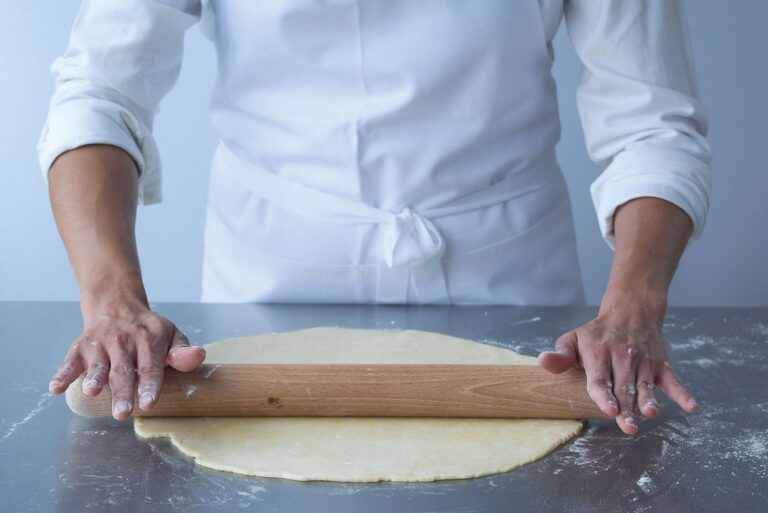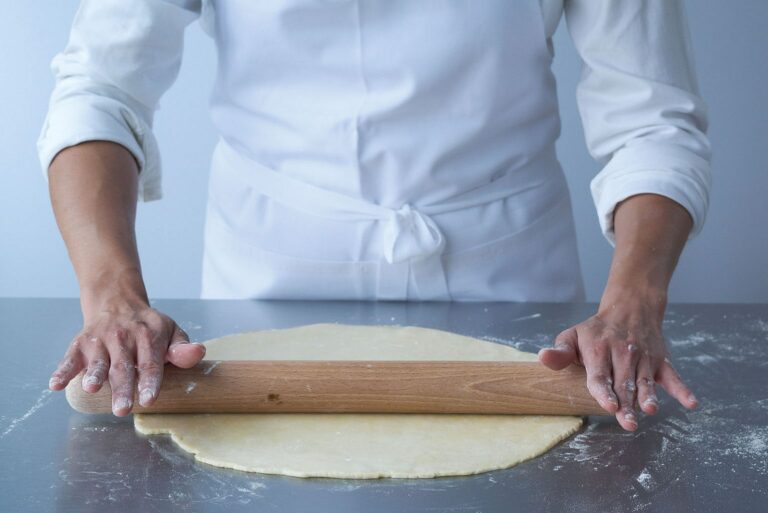An efficient rolling technique helps to ensure pastry is not stretched or overworked (which can cause excessive shrinkage during baking). It also helps to prevent the pastry from warming up during the shaping and lining process, which makes it difficult to handle and can result in greasy pastry. After chilling the pastry in the fridge, remove it when it is cold and firm to the touch, not completely hard or it will crack when rolled; it should be just pliable. If it has been chilled for more than 2–3 hours, remove from the fridge and leave at room temperature for 5 minutes before rolling, to soften it slightly. Use only as much flour on the work surface as you need to prevent the pastry from sticking, and no more (although a little more is useful when rolling out layered pastries). Flour the rolling pin too, but avoid sprinkling flour over the pastry itself, or it can result in grey, floury patches.

1. First ‘ridge’ the pastry disc: hold the rolling pin in both hands loosely and tap it lightly over the entire surface of the pastry once or twice. Turn the pastry 90° and ridge again. Repeat until the circle has at least doubled in size. Don’t turn the pastry over; it is unnecessary and can result in overworking.

2. Once the circle has at least doubled in size, start to roll it. Use 3 short, sharp strokes of the rolling pin, rather than one long roll. Turn the pastry 90° after every few rolls.

3. Once the pastry is rolled to the required thickness (usually about 3mm), the pastry should be an even thickness and circular in shape with no excessive cracking at the edges.
A note on ridging…
Ridging is much gentler on the pastry than rolling, so try to continue as long as possible before starting to roll. Ridging layered pastry helps to preserve the layers, and is also a useful technique when you are trying to roll out fridge-cold pastry. More often than not pastry has to be rolled into a disc, so turning the pastry 90° every few ridges and rolls will help to keep the pastry in a circle. Avoid twisting and turning the rolling pin as this will stretch the pastry unevenly. If the pastry starts to crack a little at the edges, stop ridging and seal the crack with your fingertips.
A note on rolling…
Always turn the pastry rather than the rolling pin. Use a loose grip on the rolling pin and avoid applying too much pressure when the rolling pin comes into contact with the pastry; you just need a light pressure to encourage the pastry gently to expand, not stretch. Also be aware that your dominant hand will be stronger and may push down
a little more firmly than your other hand; even pressure is important for the end result.
